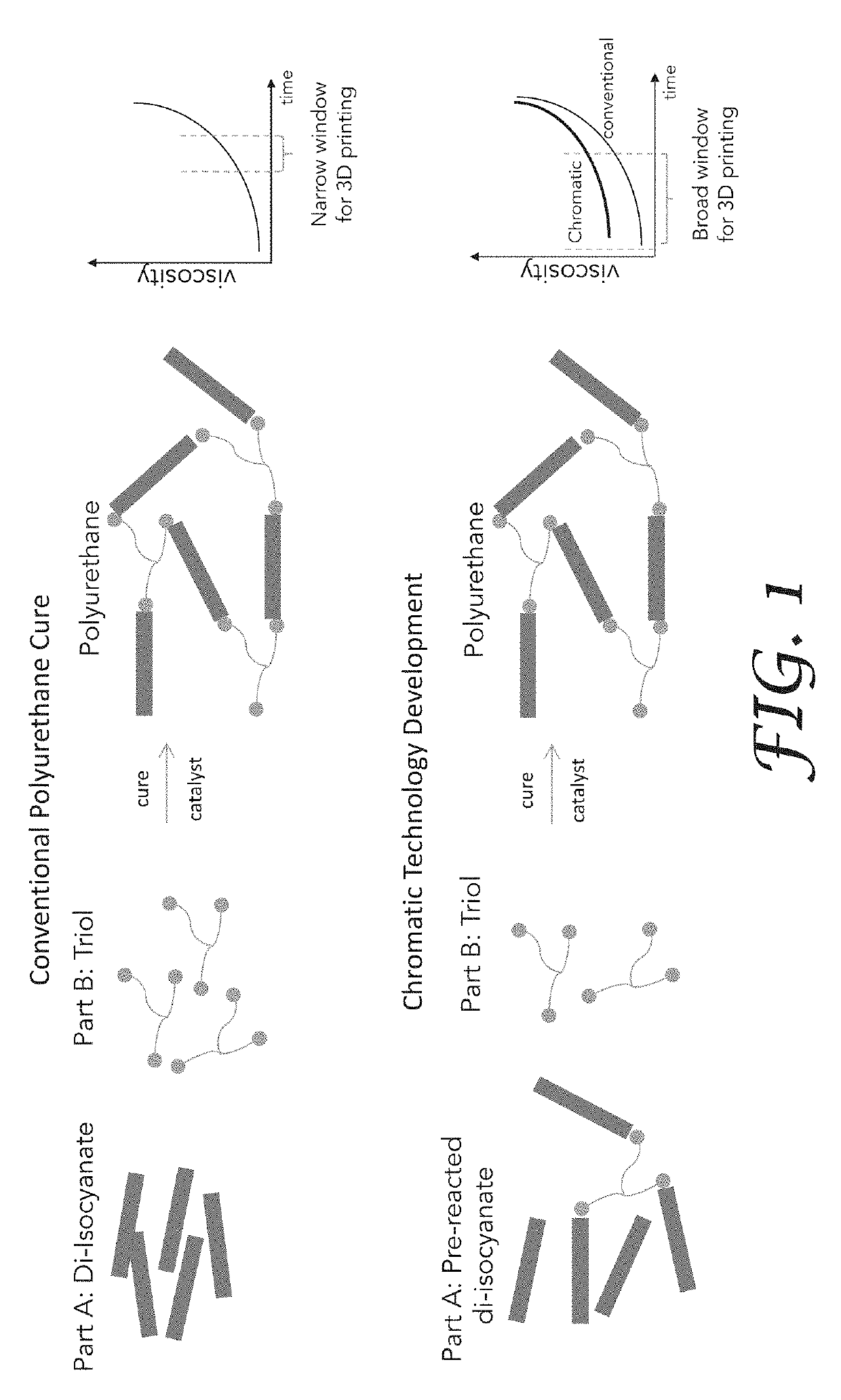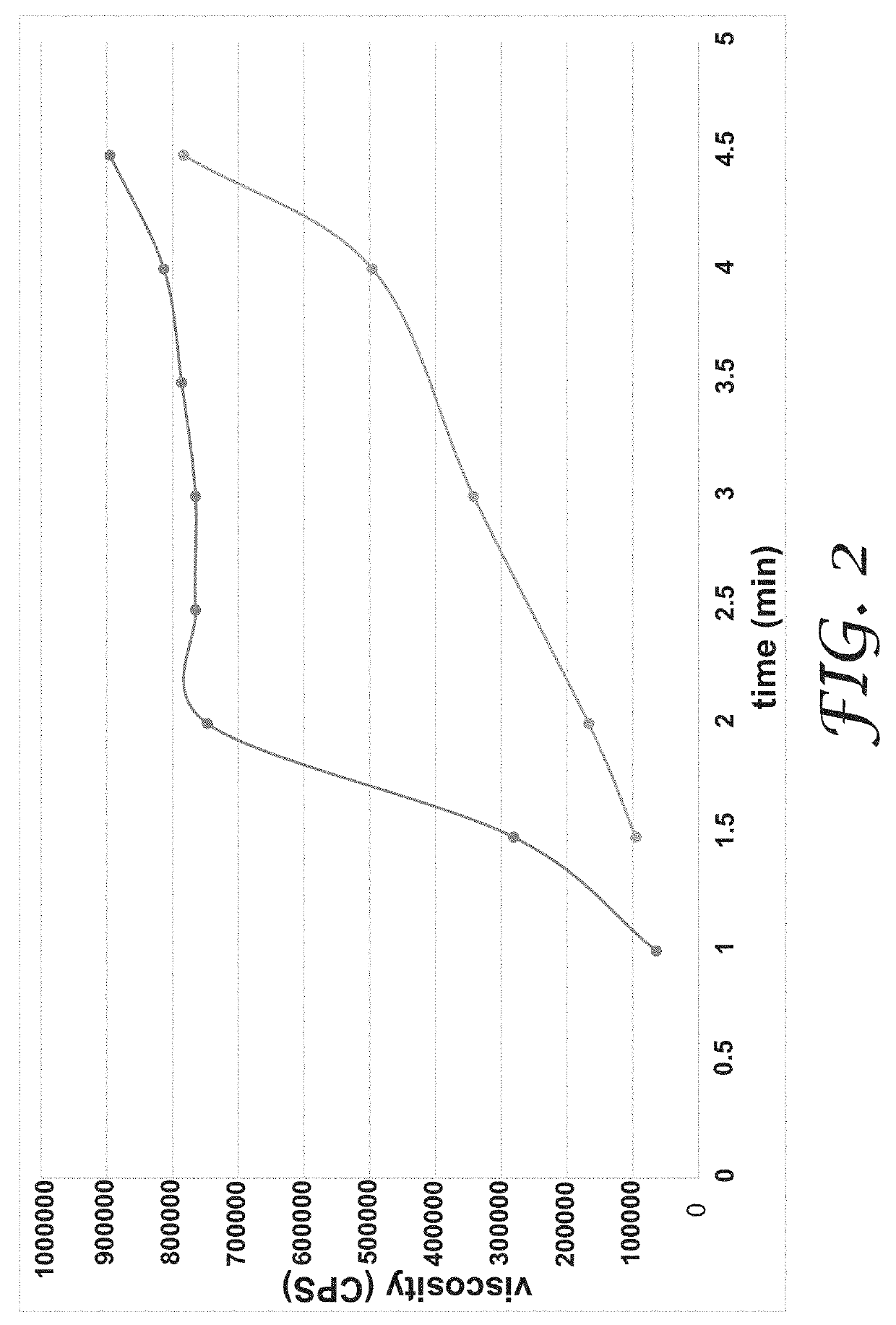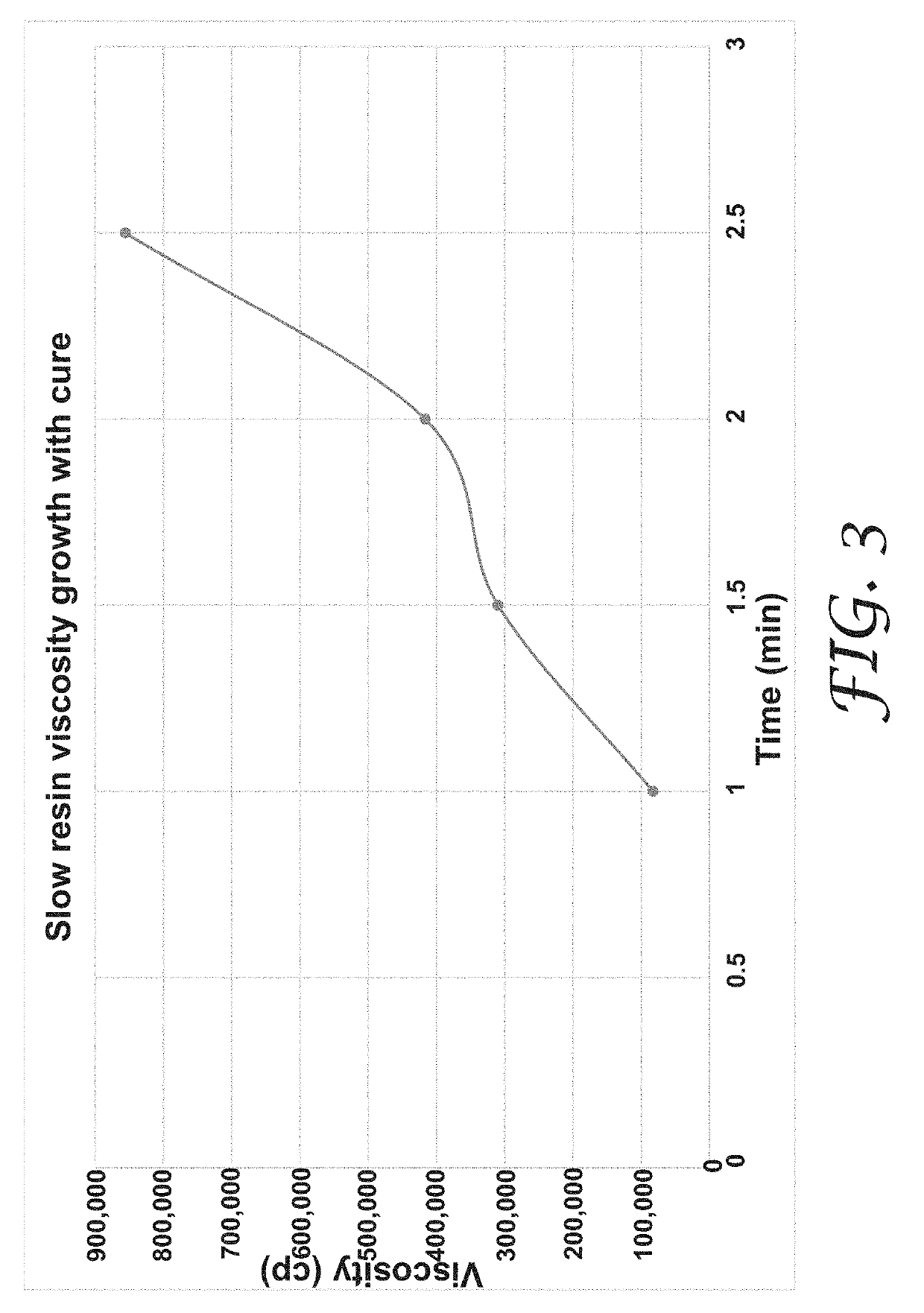Manufacture of three dimensional objects from thermosets
- Summary
- Abstract
- Description
- Claims
- Application Information
AI Technical Summary
Benefits of technology
Problems solved by technology
Method used
Image
Examples
embodiment 1
[0107]A method of creating a three dimensional (3D) object from reactive components that form a thermoset product using extruded thermoset printing, comprising:[0108]providing first and second reactive components that are effective to form a thermoset product having a predetermined layer resolution during the method;[0109]introducing the first and second reactive components into a mixing chamber where mixing occurs to form a mixture,[0110]wherein the first and second reactive components have a residence time in the mixing chamber effective to form a partially reacted thermoset product in the mixing chamber and result in the predetermined layer resolution upon exiting the mixing chamber, and[0111]wherein the first and second reactive components have a residence time in the mixing chamber insufficient to completely react;[0112]extruding the partially reacted thermoset product out of the mixing chamber through an extrusion nozzle and onto a substrate;[0113]moving the extrusion nozzle a...
embodiment 2
[0114]The method of Embodiment 1 wherein the thermoset product comprises a urethane and / or urea-containing polymer.
embodiment 3
[0115]The method of Embodiment 1 or 2[0116]wherein the first reactive component comprises an isocyanate,[0117]wherein the second reactive component comprises a polyol comprising at least one terminal hydroxyl group, a polyamine comprising at least one amine that comprises an isocyanate reactive hydrogen, or a combination of the polyol and the polyamine.
PUM
| Property | Measurement | Unit |
|---|---|---|
| Fraction | aaaaa | aaaaa |
| Fraction | aaaaa | aaaaa |
| Fraction | aaaaa | aaaaa |
Abstract
Description
Claims
Application Information
 Login to View More
Login to View More - Generate Ideas
- Intellectual Property
- Life Sciences
- Materials
- Tech Scout
- Unparalleled Data Quality
- Higher Quality Content
- 60% Fewer Hallucinations
Browse by: Latest US Patents, China's latest patents, Technical Efficacy Thesaurus, Application Domain, Technology Topic, Popular Technical Reports.
© 2025 PatSnap. All rights reserved.Legal|Privacy policy|Modern Slavery Act Transparency Statement|Sitemap|About US| Contact US: help@patsnap.com



